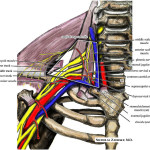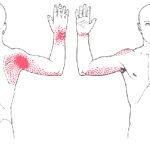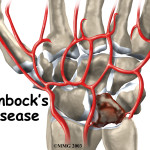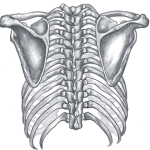The sports physiotherapist will commonly treat shoulder presentations. One of the most common presentations, particularly in an athletic population, is subacromial impingement syndrome (or external impingement). Therefore, it is essential that the sports physiotherapist be fully aware of the more common contributing factors and treatments for this condition. This article discusses the effect of posterior capsule tightness and the “Diablo Effect” on subacromial impingement syndrome.
BIOMECHANICS
As I am sure the majority of you are aware, motion of the glenohumeral joint involves spin and translation. For the purposes of discussing the “Diablo Effect” we are most concerned with the translation. During the first 30 degrees of elevation (i.e. both flexion and abduction) the humeral head translates superiorly to the superior glenoid rim (Sizer et al 2003). Then upon further elevation the humeral head then translates inferiorly. During flexion this is combined with a posterior translation and during abduction its combined with an anterior translation. This inferior translation of the humeral head allows preservation of the subacromial space during elevation activities.
PATHOMECHANICS
Athletes who have posterior glenohumeral capsular tightness may experience a phenomenon known as the “Diablo Effect”. As the athlete attempts to elevate their arm above 30 degrees posterior tightnesses prevent inferior translation of the humeral head (Warner 1990). This results in a relative superior positioning of the humeral head during elevation activities, and hence reducing the subacromial space. Thus, this can contribute to the athlete developing subacromial impingement syndrome.
ASSESSMENT
Objective assessment of the length of the posterior capsule is integral before you decide to aim interventions at it. The most clinically useful test to assess posterior capsule tightness is shoulder horizontal adduction with the scapula stabilised. Laudner et al (2006) found this test to be reliable, and also correlated with a loss of internal rotation in baseball pitchers.
TREATMENT
Obviously, once you have assessed the posterior capsular structures and found it to be a probable contributing factor to the athlete’s presentation you should aim treatments towards it. Treatments that may be used to improve soft tissue flexibility of the posterior capsule are shown below (Wilk et al 2002):
Sleeper Stretch (Posterior Capsule Stretch)
This kind of stretch can be utilised to increase posterior capsule length and internal rotation range of motion.
AP Shoulder Mobilisation
Posterior Capsular Releases
Posterior capsule releases are often quite helpful, and can often be used in these athletes to get an immediate improvement in ROM. Whilst I would not use techniques exactly as shown below, you can definitely get the idea.
What are your thoughts on the contribution of posterior capsule tightness and the “Diablo Effect” to subacromial impingement sydnrome? Be sure to let me know in the comments or catch me on Facebook or Twitter
If you require any sports physiotherapy products be sure check out PhysioSupplies (AUS) or MedEx Supply (Worldwide)
REFERENCES
Laudner KG, Stanek JM, Meister K. Assessing Posterior Shoulder Contracture: The Reliability and Validity of Measuring Glenohumeral Joint Horizontal Adduction. J Athl Train. 2006 Oct–Dec; 41(4): 375–380.
Sizer PS, Phelps V, Gilbert K.Diagnosis and Management of the Painful Shoulder. Part 1: Clinical Anatomy and Pathomechanics. Pain Practice 2003 3(1) 39–57
Sizer PS, Phelps V, Gilbert K. Diagnosis and Management of the Painful Shoulder. Part 2: Examination, Interpretation, and Management. Pain Practice 2003 3(2) 152–185
Warner JJ. Patterns of flexibility, laxity, and strength in normal shoulders and shoulders with instability and impingement. Am J Sports Med 1990 8(4): 366-75
Wilk KE, Meister, K and Andrews JR. Current Concepts in the Rehabilitation of the Overhead Throwing Athlete. Am J Sports Med 2002 30 136-151
Related Posts
Comments










Great site. A lot of useful information here. I’m sending it to some friends!
you guys are awesome, this is the most useful website EVER for physio’s. Such an easy read. keep it going!!
Thanks for the support!